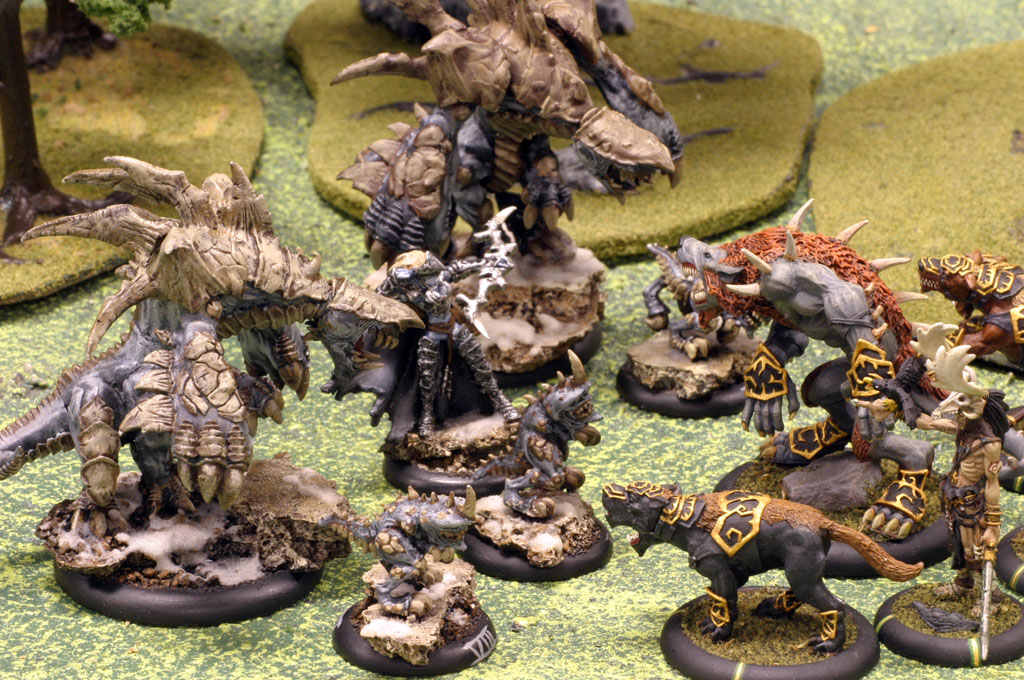List building- From Theory to Practice – Part III

The third and final installment of list refining principles.
This is the final part of this article. You can always go back and read Part’s I and II. Here are four more ideas that will help you hone your army lists on the tabletop. As with before, I’m using my Hordes army as the example, but these principles work just as well in other game systems.
#4- Take note of the unforeseen
In my first game, Ben ran a very, very aggressive in-my-face Trollblood army. I had next to no time to shoot before he was in my lines. Although I was able to recover, it put me in an awkward tactical position since I was unable to use the ranged element that is of my factions’ strengths. It forced me to change the way I would’ve preferred to play the list, and forced me to see if the list (any my own tactical acumen) could handle the unexpected. If you’re serious about refining a list, say you’re going to a big tournament, then you should even make it a point to ask your opponents to play a little differently, and field units you aren’t used to seeing. It’s one thing to go in to competitive play expecting to see Cygnar’s Kara Sloan with some Defenders, and you should be ready to handle that. But you also need to be ready for those weird lists that many of the top players often bring. How will you deal with a Haley Trencher rush? Or Mortenebra with heavy ‘Jacks and Blackbane’s Raiders? A lot of that prep will depend on your local opponents and what they like to field, so ask them to come at you with the unexpected.
#5- Remember, you have two lists
Having said that your list needs to be able to handle unexpected situations and matchups, you also need to remember that in Warmachine tournaments you can bring two lists to a steamroller tournament and decide which to use before each game. Being a rock-paper-scissors game, you need to realize that everything has its counter. This list is pretty darned balanced, but as I noted, it’s still not great at scenario play, and struggles against stealth and incorporeal opponents. It would also have some difficulties with a heavy ‘Jack wall or a Butcher force with lots of Man-o-War’s. One idea is to have my 2nd list be able to handle those types of opponents. A Thagrosh blighted Ogryn, or a Saeryn heavy Warbeast list could cover some of those weaknesses. Having one list that’s more ranged, and another that leans towards melee is another factor. The worst thing you could do is to have to lists that both fight the same way (say a Haley and a Sloan list both built to kill from range) and realize your opponent is running a force that is mostly, or even entirely immune to ranged attacks. Believe me, those forces do exist! Just wait till you’ve faced the Blindwater Minion contract!
If you’re stuck with one list, then you have to pay even more attention to ensuring your list can deal with a variety of opponents.
#6- Change up your playstyle
Maybe you always like to run your cavalry on the flanks. Maybe you’re more defensive minded. Change it up. Run those cav right up the middle. Play aggressively. It will force you to really experiment with how you use your models/units. In the end, you’ll have a much better sense of the capabilities of your army, and you’ll be a much better player. In the case of this list, I really tried to experiment with how I ran the Archers. As a flanking unit, or a line-holder. I did the same with the Ogryn.
#7- Don’t be quick to make wholesale changes
It’s a good bet you’ll lose some games during your refinement process. Don’t junk an entire list just because of one bad loss. Ask your opponent if you can replay the game, and then switch things up. Change your tactics, your deployment, everything. See if the loss was due to the list, or to some other correctable factor. When you do make changes, keep them small. I try to change no more than 10% of my points at a time, and even then, I try to only do that once every several games. The more you get used to refining lists, the better you’ll be able judge what to change and why.
Taking some time to refine your lists is a good process in any game system. You’ll learn more about your army and your own playstyle. And the more you do it, the better and faster you’ll be able to come up with solid lists in the future. The top players always take time to prep before a big event.






